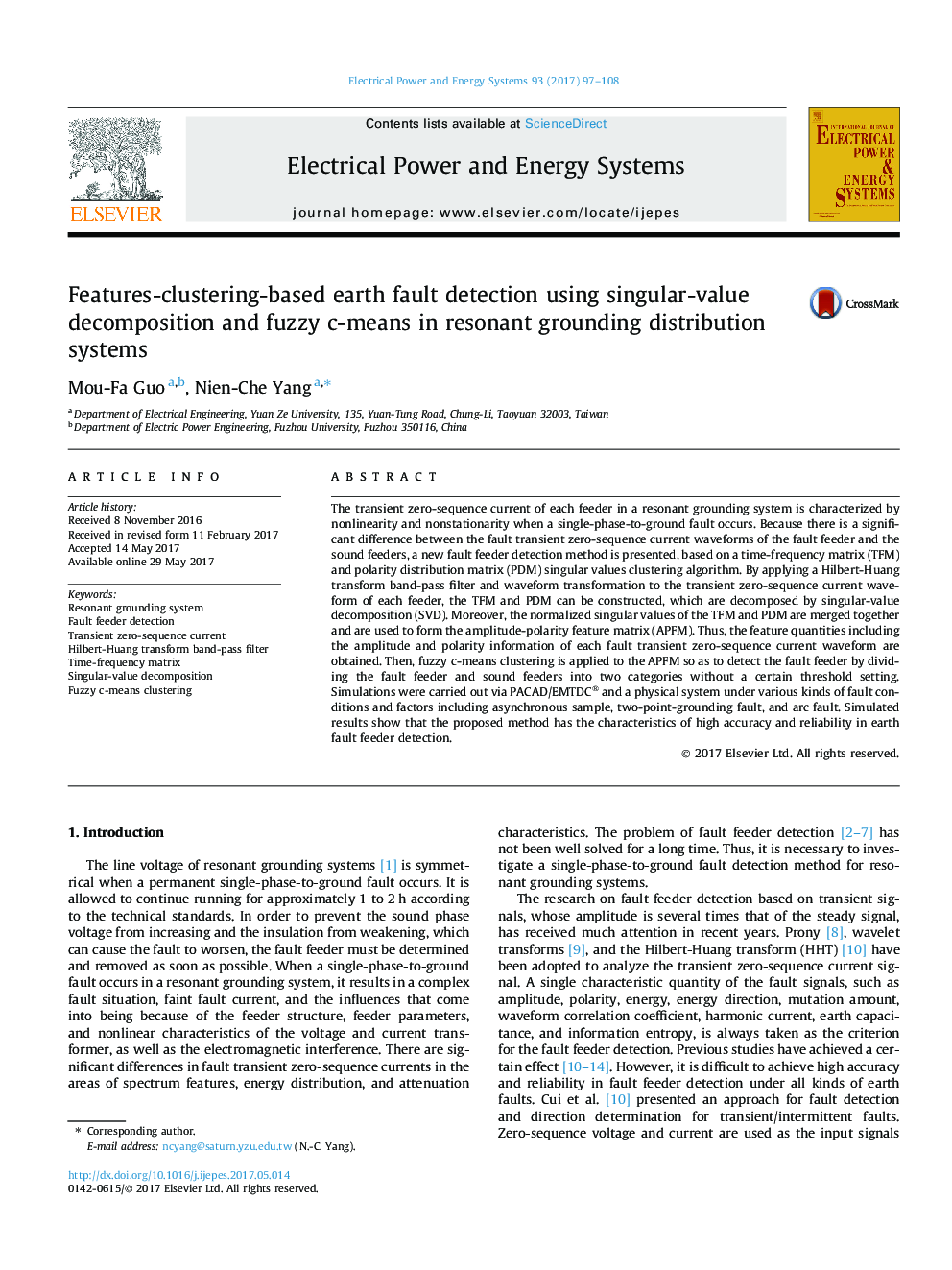| Article ID | Journal | Published Year | Pages | File Type |
|---|---|---|---|---|
| 4945502 | International Journal of Electrical Power & Energy Systems | 2017 | 12 Pages |
â¢Proposing a novel method to detect the earth fault in resonant grounding systems.â¢Amplitude and polarity feature matrixes calculating algorithm has been developed.â¢Fuzzy c-means clustering is used to replace a threshold setting.â¢The proposed method is extensively tested on PSCAD/EMTDC and physical systems.
The transient zero-sequence current of each feeder in a resonant grounding system is characterized by nonlinearity and nonstationarity when a single-phase-to-ground fault occurs. Because there is a significant difference between the fault transient zero-sequence current waveforms of the fault feeder and the sound feeders, a new fault feeder detection method is presented, based on a time-frequency matrix (TFM) and polarity distribution matrix (PDM) singular values clustering algorithm. By applying a Hilbert-Huang transform band-pass filter and waveform transformation to the transient zero-sequence current waveform of each feeder, the TFM and PDM can be constructed, which are decomposed by singular-value decomposition (SVD). Moreover, the normalized singular values of the TFM and PDM are merged together and are used to form the amplitude-polarity feature matrix (APFM). Thus, the feature quantities including the amplitude and polarity information of each fault transient zero-sequence current waveform are obtained. Then, fuzzy c-means clustering is applied to the APFM so as to detect the fault feeder by dividing the fault feeder and sound feeders into two categories without a certain threshold setting. Simulations were carried out via PACAD/EMTDC® and a physical system under various kinds of fault conditions and factors including asynchronous sample, two-point-grounding fault, and arc fault. Simulated results show that the proposed method has the characteristics of high accuracy and reliability in earth fault feeder detection.
